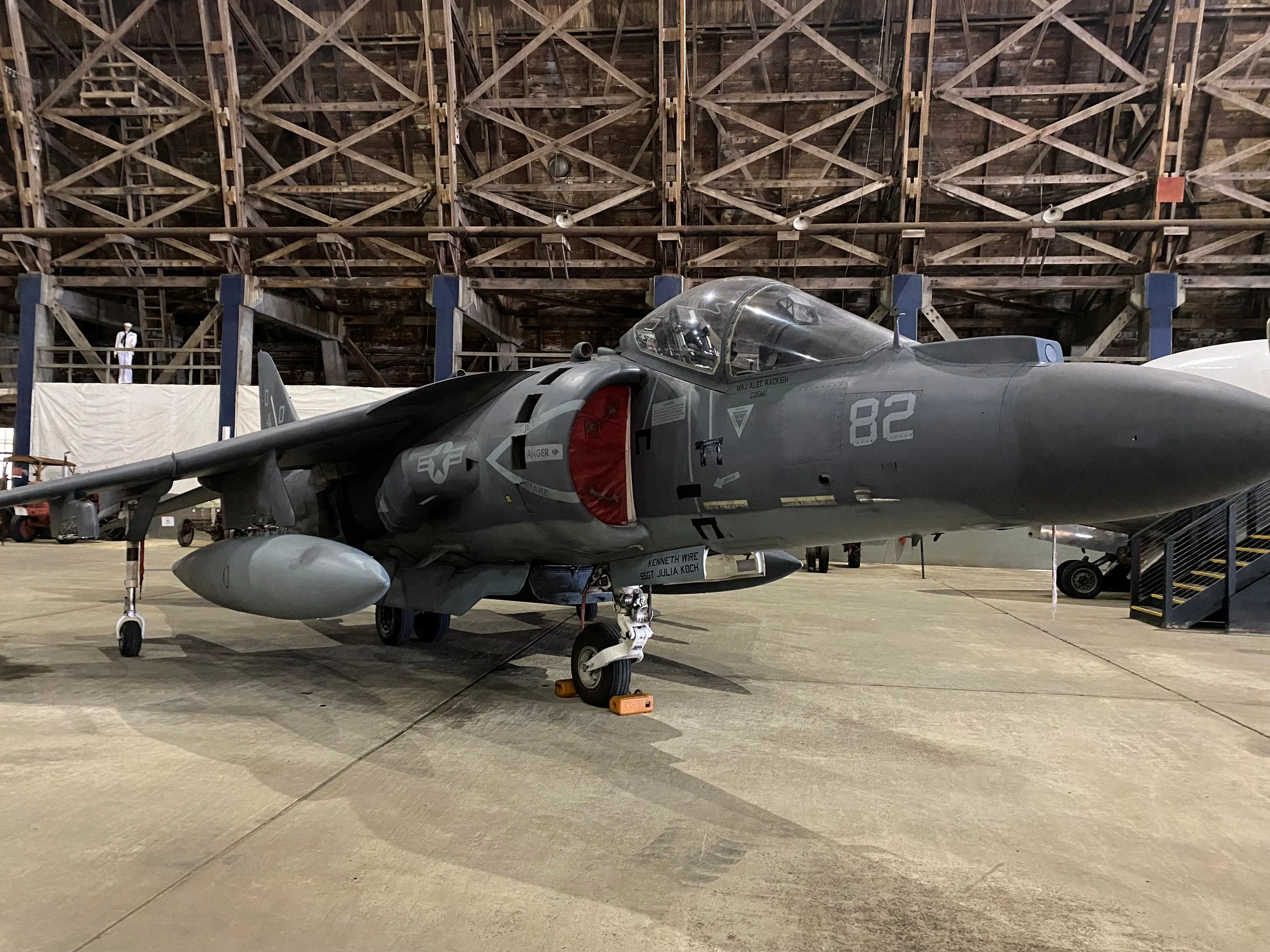AV-8B Harrier II+
The Museum is excited to announce a major new addition to its collection: a combat-tested AV-8B Harrier II+! tThis aircraft flew into the Museum on August 4th 2025, and is now on permanent static display as part of the Museum’s growing collection of historic military aircraft!
The AV-8B Harrier II is a second-generation vertical/short takeoff and landing (V/STOL) aircraft based on the original British Harrier. Featuring a larger composite wing, a more powerful Rolls-Royce Pegasus engine, and an elevated cockpit for improved visibility, the Harrier II could carry heavier weapons, fly farther, and maneuver more effectively than its predecessor. Developed in the 1970s through U.S.–U.K. collaboration between companies McDonnell-Douglas and Hawker Siddeley, it entered U.S. Marine Corps service in 1985. Its V/STOL capability allows it to operate from small ships and improvised runways, making it one of the most versatile and innovative combat aircraft of its time.
The Museum’s AV-8B Harrier II+ was delivered to the United States Marine Corps on March 30, 1995, and went on to serve with distinction over a 30-year career. It logged a total of 5,518 flight hours, including 631 combat hours across 88 missions, and completed 5,457 landings. This aircraft saw action in multiple theaters of operation. It flew combat missions during Operation Inherent Resolve (OIR) in Iraq and Syria, operating from both the USS Boxer and forward-deployed bases such as Al Udeid Air Base in Qatar. It also supported military and humanitarian missions, operating from the USS Peleliu, USS Nassau, and USS America, contributing to operations in Bosnia-Herzegovina, Albania, and the Arabian Gulf. In one notable deployment, it provided aerial support following the tragic collision of the USS John S. McCain near Singapore. Following its operational service, the Harrier concluded its career with Squadron VX-31 at Naval Air Weapons Station China Lake, where it supported developmental testing and evaluation programs. It was flown directly into Tillamook under its own power in August 2025, marking the beginning of its new role as a centerpiece of the Museum’s collection. The airplane is on loan from the National Naval Aviation Museum in Pensacola, Florida.
SPECIFICATIONS
Type Ground-Attack Aircraft
Weight Empty 13,968 lbs.
Wingspan 30 ft. 4 in.
Length 46 ft. 4 in.
Height 11 ft. 8 in.
Power One Rolls-Royce Pegasus F402-RR-408
Turbofan jet engine
Manufacturer McDonnell-Douglas
PERFORMANCE
Maximum Speed 673 mph
Cruise Speed 630 mph
Range 2,100 miles
Service Ceiling 50,000 ft.




